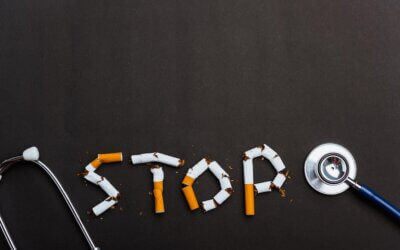 Most people are aware of the persistent “party culture” surrounding universities and colleges, but few are aware of the extent to which drugs and alcohol affect students. This is understandable in many respects, as students normally enter higher education between the ages of 18 and 25, making it their first real experience living on their own. Paired with high-stress environments, high-pressure curriculums, peer-pressure, and anxiety relating to leaving familiar environments and stability, many students logically turn to self-medicating with drugs and alcohol.
Most people are aware of the persistent “party culture” surrounding universities and colleges, but few are aware of the extent to which drugs and alcohol affect students. This is understandable in many respects, as students normally enter higher education between the ages of 18 and 25, making it their first real experience living on their own. Paired with high-stress environments, high-pressure curriculums, peer-pressure, and anxiety relating to leaving familiar environments and stability, many students logically turn to self-medicating with drugs and alcohol.
This pressure has risen significantly in recent years, with some studies showing that students taking advantage of on-campus mental health services have gone up by more than 30% in the last 5 years, despite only a 5% increase in college admissions during that period. Another survey of 980 students across campus found that 60% used alcohol to manage stress, another 26% had used Adderall or a similar amphetamine to increase performance, and nearly half of Adderall users had combined it with alcohol. These drugs are deeply damaging to individual health, academic performance, and often have life-long medical and personal consequences. Understanding how and why drugs and alcohol are used on campus can help you to make the right decision for yourself or a loved one, especially if they need help.
Why do Students Turn to Drugs and Alcohol?
An estimated 4 out of 5 students drinks, with many drinking in patterns that are “binge drinking”. In surveys, some 25% report they’ve missed classes, failed tests, or been unable to meet academic responsibilities as a result of this drinking. Why? Reasons are often complex and interplay with personal health, the college in question, and the individual’s friends and social life.
Exploration – Young people are more likely to explore drugs and alcohol. This is especially true when not tempered by the presence of an adult or family member. Most college students are young, away from home for the first time, and experimenting with freedom for the first time. This puts them at risk for increased drug and alcohol consumption, leads to risk-seeking behavior, and to exposure to drugs and alcohol.
Stress – Colleges and universities are very stressful environments. While stress is well-documented for specific careers like medical students or law students, students of nearly any discipline are expected to perform and to do so consistently. Deadlines can result in massive stress, feelings of failure and inadequacy, and the need for release of tension. Many self-medicate by either binge-drinking, taking performance enhancing drugs, or taking drugs to relax. Today’s students face more stress and in more ways than any group of students before them. The cost of higher education has risen exponentially, “success” culture and social media push a need to be effortlessly perfect, and course loads are actually increasing as universities pile digital media, computers, and other digital studies onto already full programs. As a result, student depression, anxiety, and suicide are up from 9.6 per 100,000 to 11.1 per 100,000 (2015-2019).
Achievement Culture – Modern students are expected to achieve, to “hustle”, and to be perfect. Many maintain full-time jobs, run vlogs and time-consuming social media accounts, and have side-projects intended to either earn money or foster relationships to drive them into a career once they graduate. This achievement culture is driven by a combination of high student debt, social pressure, and social media but ultimately results in students who are over-pressured and over worked. This is evident in statistics such as those showing suicide is the second highest cause of death in college and university.
Get Your Questions Answered Now.
What Drugs do Students Use on Campus?
 Most college-use drugs include either performance-boosting substances or stress-relieving drugs and intoxicants meant to relax or inebriate. Of these, alcohol is the most common, closely followed by performance enhancing drugs such as Ritalin and Adderall.
Most college-use drugs include either performance-boosting substances or stress-relieving drugs and intoxicants meant to relax or inebriate. Of these, alcohol is the most common, closely followed by performance enhancing drugs such as Ritalin and Adderall.
Alcohol – 4 out of 5 college students drinks, most of whom binge drink. This is especially prevalent on “party campuses”, where students are expected to binge drink on parties and during weekends and even as part of social initiation rites. Culture makes consuming large quantities of alcohol a normal and expected thing, to the point where individuals who don’t may be singled out, mocked, and bullied. Because consistent exposure to alcohol is one of the largest factors in alcoholism, this greatly increases the risk of a substance abuse problem. Alcohol is used as a party drug, to decrease social inhibitions, and for self-medication to reduce stress.
Study Drugs – So-called “study” or “performance enhancing drugs like Ritalin are used to enhance cognition and improve learning, but often result in addiction. Today, some 15-18% of college students regularly use these drugs to improve performance, with some 26% of all students surveyed admitting to taking pills more than 8 times. This statistic increases to about 20% in the case of medical students, who face additional pressure to perform well on difficult tests. These drugs include Ritalin, Modafinil, Adderall, and Vyvanse provide a temporary boost to concentration, making it easier for students to complete heavy workloads at once. While these drugs are primarily amphetamines with a high risk of addiction and health problems, most students think of them as completely safe. In addition, most students abusing study drugs source them from friends or for a relatively low cost, right on campus.
Muscle Relaxers – Drugs like benzodiazepines and opioids are most commonly used as muscle relaxers, but on campus, they’re used to destress, unwind, and add to the effects of alcohol. Students are significantly more likely to abuse prescription pain pills, benzodiazepines, and amphetamines than resort to street drugs like methamphetamine or heroin, but these drugs are still dangerous, addictive, and have severe long-term mental and physical side-effects.
Getting Help for Substance Use Problems
Millions of students struggle with substance use disorders. As a result, campuses more often offer counseling, substance use recovery programs, time off from study for medical and mental health reasons, and resources to use to get help. Consistent exposure to any substance will likely result in chemical dependence and tolerance, increased doses, and eventually seeking behavior and addiction. Eventually, this interferes with your ability to study, perform academically, engage with friends or family, maintain responsibilities (social or otherwise), and take care of yourself. Untreated, substance use disorder will have immediate and long-term negative health effects and will continue to impact you as you graduate (if you do so) and move into your career.
Getting help means seeking out detox to get clean or sober, taking behavioral therapy to learn coping mechanisms and to solve the underlying problems behind initial substance use and dependency. These programs are typically reinforced by counseling, therapy, and learning skills to improve quality of life and study habits, manage social relationships, and to manage stress.
Drug and alcohol abuse are a huge problem on U.S. campuses and it negatively affects the lives of millions of students. If you or a loved one is one of them, there is help.
If you or your loved-one is seeking help for opioid use or another addiction, call us at (714) 400-2048 and look into our recovery programs. Our Drug and Alcohol Treatment Center in Huntington Beach helps clients by providing them with addiction intervention services, detox, and residential addiction treatment.
Other Articles you might be interested in:
Understanding Detox in Orange County
Detoxification, or detox, is the initial phase of recovery from...
Understanding Signs of Addiction with Broadway Treatment Center
Recognizing the signs of addiction is crucial for early...
How to Overcome Addiction
Overcoming addiction is a transformative journey that requires a...



